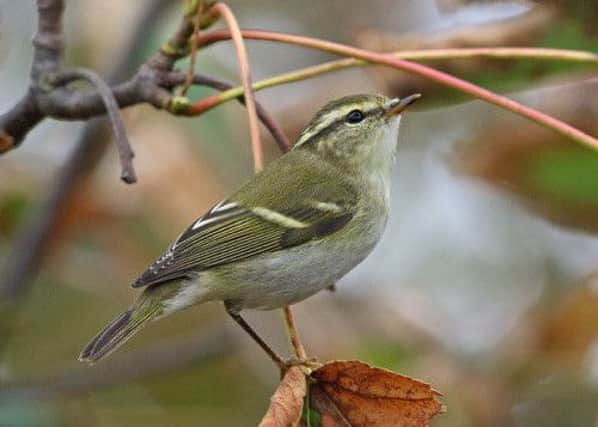Birdwatch: Warblers' migration is a bit of a mystery


Could this turn out to be another bumper year for arrivals of this tiny migrant from east of the Urals?
Last autumn was one of the best ever for yellow-browed warblers with nearly double the usual numbers. There were 76 on one day in September at the Fair Isle Bird Observatory.
Advertisement
Hide AdAdvertisement
Hide AdSightings have been steadily increasing every year since the 1980s and there are two theories as to why this is happening.
One is that yellow-browed warblers are expanding their range westwards the other is that part of the population has established a new pattern of post breeding migration westwards instead of the traditional route south east to the tropical forests of south east Asia.
More yellow-browed warblers are now being caught and ringed as they arrive here- one was ringed at the Warren at Spurn on Wednesday – and this could provide answers as to where they go next.
Last October one ringed at the Gibraltar Point observatory in Lincolnshire was recaught 330 miles away and only seven days later in the Nanjizal Valley in West Cornwall, having managed in the meantime a significant gain in weight.
Advertisement
Hide AdAdvertisement
Hide AdThis suggests that after arriving here yellow-browed warblers move south west across England before crossing to Europe again and into the Iberian peninsula – perhaps more answers will be found this autumn.
Two other rare warblers from east of the Urals, a Blyth’s reed and Pallas’s grasshopper, were both caught by ringers in Church Field at Kilnsea.
A Greenish warbler was in Vicar’s Lane at Easington, barred warblers, Portola bunting and Richard’s pipit at Spurn, blue throat, barred warbler and dotterel at Flamborough, common rose finch at Buckton and wryneck at Sammy’s Point while there was also a good selection of more common migrants.
Two Lapland buntings were in a stubble field at Long Nab, Burniston while others were seen at Foley and one at Spurn.
Advertisement
Hide AdAdvertisement
Hide AdStrong northerly winds resulted in plenty of activity on the sea with good numbers of sooty and more balearic shearwaters while a great shearwater was seen off Flamborough and great northern diver in Filey Bay.
There were also sightings of all four skua species including long-tailed and pomarine along the Yorkshire coast, two Leach’s storm petrels off Spurn and two Sabine’s gulls and black guillemot off Flamborough.
The first pink-footed geese of the autumn were also moving across the region after breeding in Iceland while there were also both pale and dark-bellied Brent geese and a white-fronted goose at Filey Dams.
Birders were also checking through common snipe on wetlands for the smaller jack snipe after one was flushed at Wilsthorpe, South Yorkshire and others were on the Canal Scrape at Spurn and Beacon Ponds.